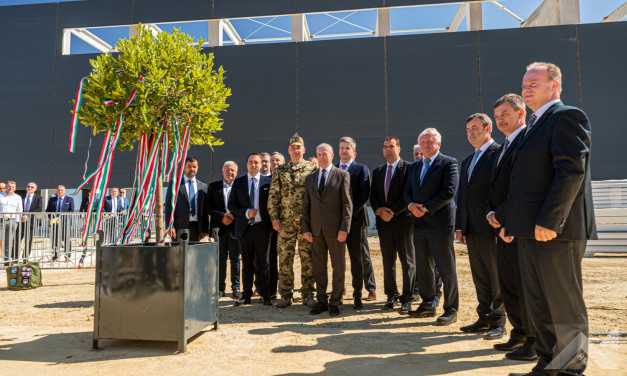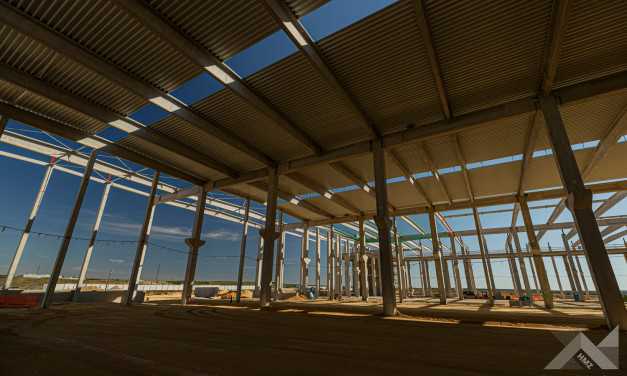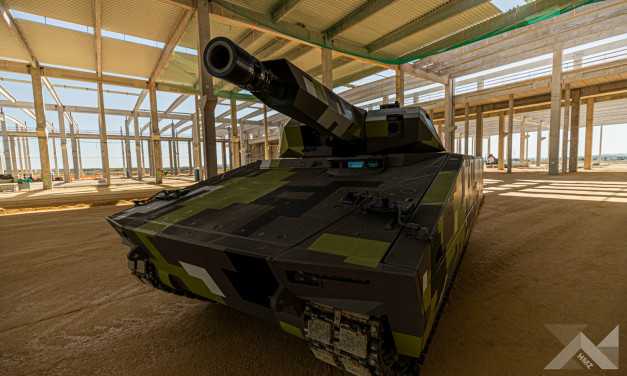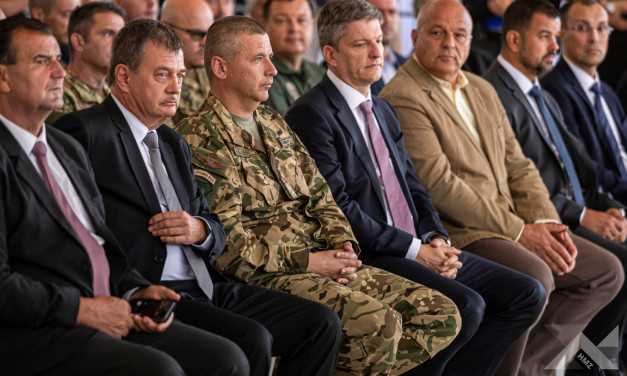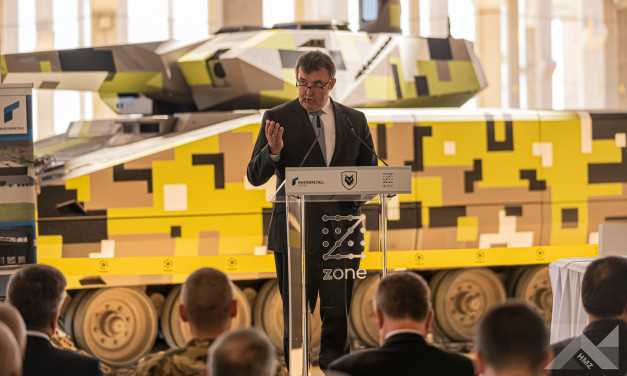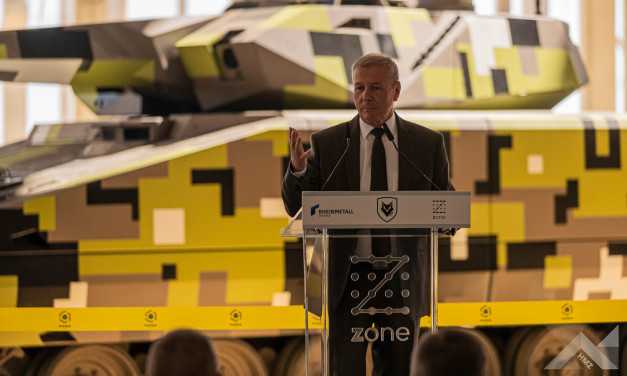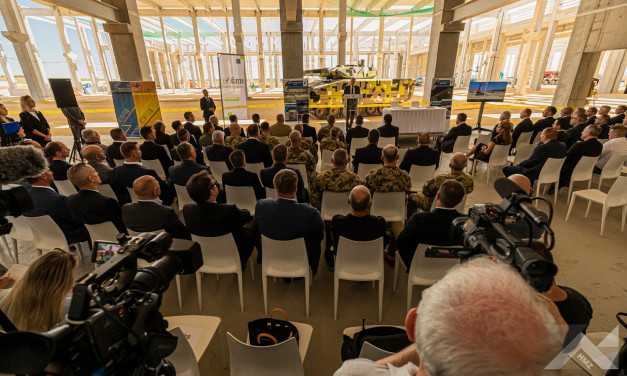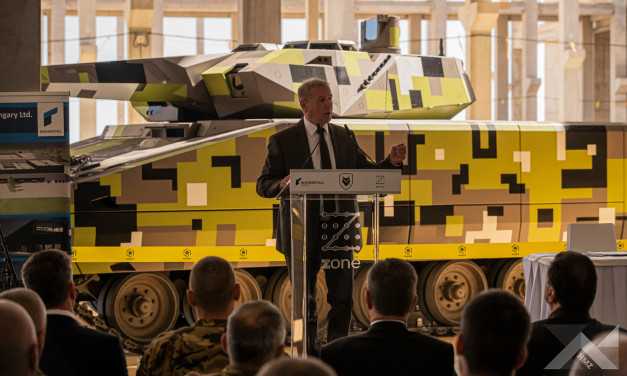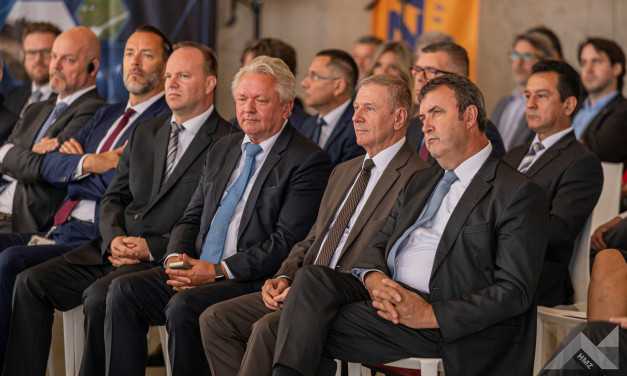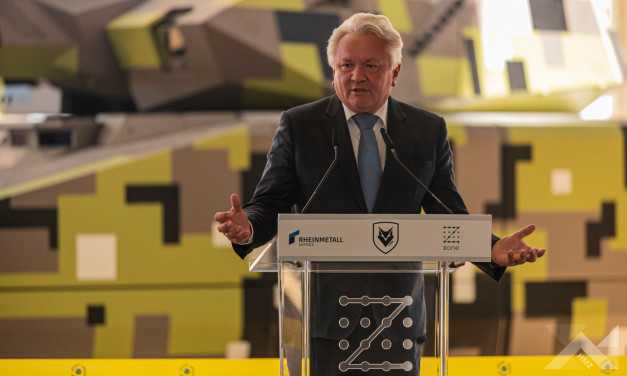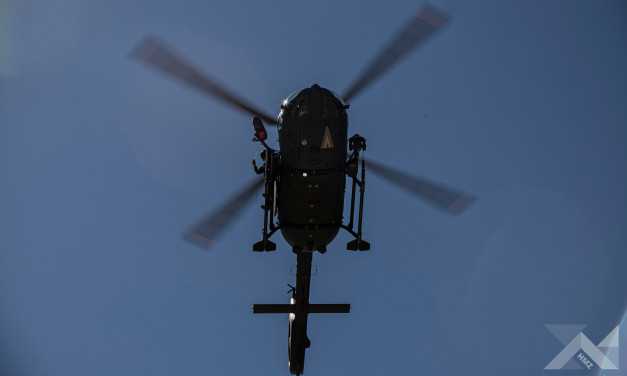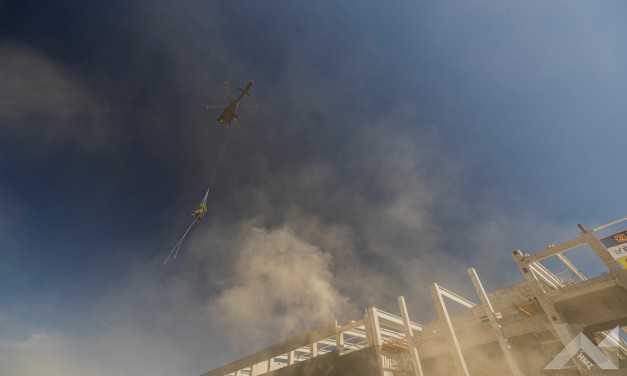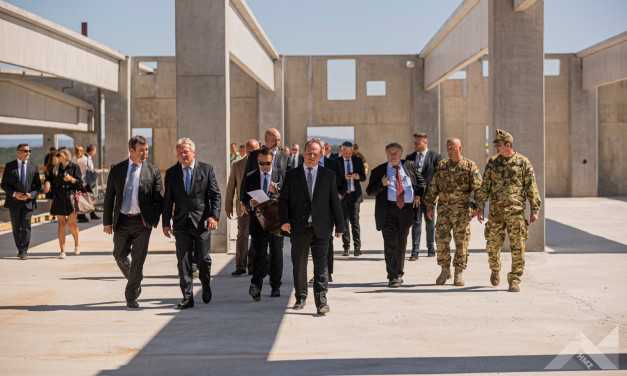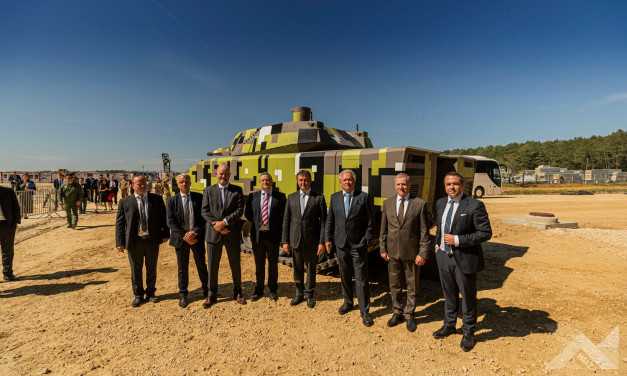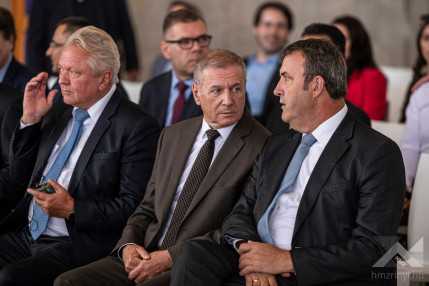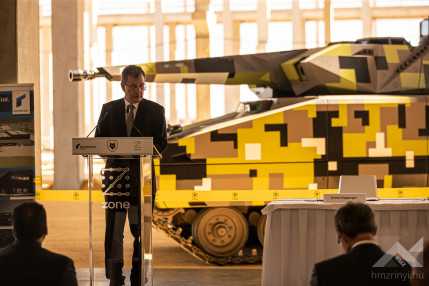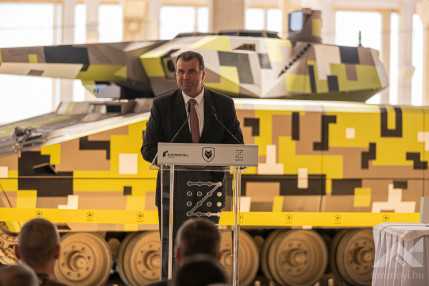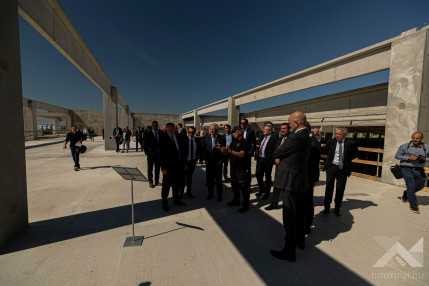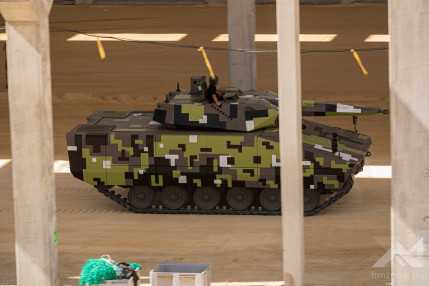The frame structure of a Rheinmetall Hungary Zrt. combat vehicle plant has been completed in Zalaegerszeg. The topping out ceremony held on 10 September was attended, among others, by Defence Minister Tibor Benkő, Minister for Innovation and Technology László Palkovics, Government Commissioner for Defence Development Gáspár Maróth and Commander of the Hungarian Defence Forces Lieutenant-General Romulusz Ruszin-Szendi.
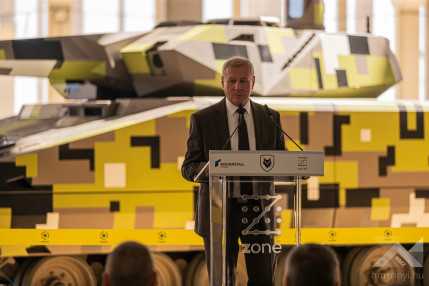
The frame structure of the plant to manufacture Lynx armored fighting vehicles has been completed. According to plans, Rheinmetall Hungary Zrt. will produce 172 of the 218 ordered Lynxs, which count as state-of-the-art vehicles in their category, and the portfolio of the plant also includes research and development as well as the testing of military vehicles. The first phase of the combat vehicle test track was already inaugurated this summer, and this time the topping-out ceremony of the plant was held in ZalaZone Industrial Park.
Speaking at the ceremony, Tibor Benkő called the event an outstanding moment in the National Defence and Armed Forces Development Program. He said that the first column of the plant had been erected six months before, and now the project was nearing the end of the first phase of construction. “This building will be a symbol of a change of era in Hungary. The symbol of a change of era in which the Hungarian government will restart domestic defence industry. Hungarian workforce will produce and manufacture military equipment in Hungary for Hungarian soldiers. What else could it be if not a change of era?” – said the minister, adding that the intention, will, commitment and economic power are all available for the development.
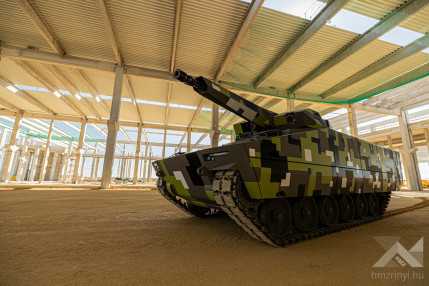
The Minister of Defence pointed out that the currently state-of-the-art, most modern armored fighting vehicles in the world would be produced in Zalaegerszeg as of 2023, taking advantage of the opportunities offered by the adjacent test track. He said that there is a need for excellent experts in the fields of research, development and innovation, since the Hungarian Defence Forces are able to perform their core duty to guarantee the Hungarian people’s security only by thinking in terms of a complex system. “We can see how vulnerable the security situation is around the world. For this reason, the national government gives priority to making the Hungarian Defence Forces into a premier force in the region. To become a premier force, they need excellent and modern military equipment, which the Hungarian defence industry will be producing, thanks to our German partners”, said Tibor Benkő.

Minister for Innovation and Technology László Palkovics called the construction of the Lynx plant one of Hungary’s biggest, most important, and certainly, most exciting enterprises. He said that after a long period of market research, Hungary is the first NATO member country to have decided on entering a newly developed Rheinmetall fighting vehicle into service in the military, and this combat power will surely increase Hungary’s security. “Our primary goal is to rebuild the Hungarian defence industry, and in parallel, to significantly develop the capabilities of the Hungarian Defence Forces. The Lynx plant will be the flagship of our efforts. Modernity is a fundamental requirement, and the modernization of the Hungarian armed forces allows no delay, so the government has decided to start the process aimed at enabling the Hungarian Defence Forces to ensure the defence of Hungary in all respects”, he said. The Minister for Innovation added that besides the rebuilding of Hungarian defence industry, the innovations make it also possible for Hungary to fulfil its international commitment to spending 2 per cent of its GDP on defence.
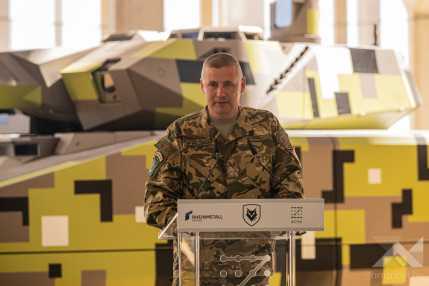
Commander of the Hungarian Defence Forces Lieutenant-General Romulusz Ruszin-Szendi expressed his thanks to the organizations involved in the project and the Hungarian government for the consistent development of the armed forces. “What can a commander say in this situation? Nothing else but thanks. We thank the government and people of Hungary for enabling us to get here through their support to the Hungarian Defence Forces and their trust in Hungarian soldiers.
Lieutenant-General Ruszin-Szendi expressed his thanks to Defence Minister Tibor Benkő and Government Commissioner Gáspár Maróth for having asked the soldiers for their professional opinion before the procurements, who told them what they need for the defence of the nation. Thus, the ongoing military technology portion of the National Defence and Armed Forces Development Program is based on real professional needs.
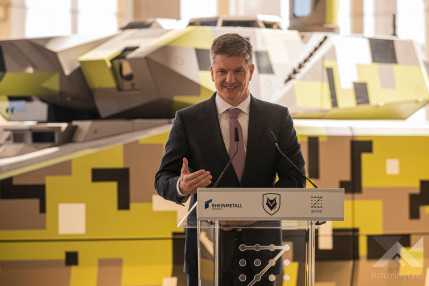
Government Commissioner for Defence Development Gáspár Maróth pointed out how smoothly the joint Hungarian–German work is going on. He said that “making a deal and creating a win-win situation are not enough for launching a truly harmonic cooperation – we need to have cultural identity as well. This cultural identity is a given between Germany and Hungary. It has been a fertile soil for cooperation, and I am very happy to see that this project engenders a number of further cooperative enterprises, not only with Rheinmetall but also with other German companies.”
Rheinmetall AG Chief Executive Officer Armin Papperger also said that the Lynx plant is equally important to Hungarians and Germans, and at once symbolizes the success of the joint efforts. “If you want to change something, you will need people who also want this change. The government, citizens and soldiers of Hungary clearly want this change. Thanks to them for this.” Armin Papperger added that he hopes to see the Zalaegerszeg plant becoming one of the state-of-the-art combat vehicle plants not only in Europe but also in the whole world.
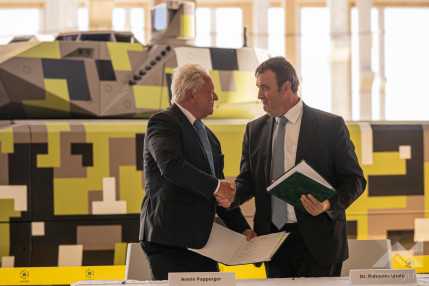
The participants also brought some future developments to the fore. During the event, Minister for Innovation and Technology László Palkovics and Armin Papperger signed an agreement on setting up a Hungarian–German munitions factory.
The evergreen symbolizing the topping-out bouquet – with the Hungarian tricolors tied on it by 12 organizations participating in the project – was lifted to the highest point of the structural frame by a helicopter of the Hungarian Defence Forces.
Galéria
